Iceboating: Better late than never
Published on November 10th, 2021
Michigan’s Eric Smith shares his “better late than never” story of his entrance into the DN Class:
The first time I ever saw a DN was in the basement of the Boston sail loft in 1982 (my first real job was working there when I was a teenager for Skip Boston.) I thought it was about the coolest thing I had ever seen, which is why I still remember seeing it to this day.
However, I never sailed one until the winter of 2016. It’s hard to explain why it took me 34 years to try DN sailing. The opportunity just never presented itself, and I never thought to seek it out.
I started soft water sailing on my family’s sailboat on Lake St. Clair in Michigan at about 7 or 8 years of age. I was racing by age 12. Up to my early 20s, I sailed anytime and on anything, from Windsurfers and Lightnings to an Islander 40.
Sailing stopped in my mid-twenties until a few years ago; there was never enough time, and we had moved too far away from any lake of significance. For me, soft water sailing is currently just short course buoy racing crewing on a J/100 on Lake St Clair and recreational sailing on a Nacra catamaran.
I bought my first DN (a disaster of a boat in hindsight) off Craig’s List from a neighbor. As a recent empty-nester, I was looking for a toy to play with in the winter. I knew no one who sailed them and did not even know how to put it together.
I brought the pile of pieces home, carried it onto the ice, figured out what piece fit where, got in, and sat there not moving. I did not even know that DNs needed pushing to get started. Anyways, three hours later, I was totally exhausted and had just had the most exciting sailing experience of my entire life.
Two things were immediately apparent: I wanted to do more iceboating, and I needed to find someone to help me out.
I started to search the internet to learn about iceboating, and Ron Sherry’s name kept popping up. I remembered Ron from my brief stint working at Boston Sails and from some soft water racing with him as a teenager. (Fun fact; Ron and I both sailed our first Port-Huron to Mackinac race together.)
However, I had not spoken to him in over 30 years, but I decided to call him, followed by a couple of trips to his shop and hours of questions he patiently answered. Based on his advice, I bought a different used boat (from Doug McFarland, the previous US2500) and started my first racing season at the Western Challenge in December 2016. Not a single race was sailed at that event that year, but I was still totally hooked.
The 2018 North American Championship was my first continental event. I was greatly surprised to finish high enough in the qualifier to sail in the Gold fleet. I really did not belong there, and although I enjoyed the event, racing in that fleet was very humbling, to say the least.
At that event, I learned two things. One was that I had a lot to learn about making a DN go fast; I was simply in awe of the speeds obtained by the other competitors. The other was that even at a national championship level, everyone I met there with was genuinely friendly, helpful, and just fun to be around, an important point I want to emphasize.
I have spent a lot of time soft water racing with lots of boats and fleet types. Never had I experienced such a sense of community within a sailing fleet. I love sailing DNs, to be sure, but it is not the boat that makes me think about it all summer long; I miss being with all the people that make it so much fun every time we get together on the ice.
Being an engineer with a decent machine shop at my disposal makes designing and building my hardware very convenient. I do not think the hardware provides me with much of a competitive advantage, but it does provide satisfaction to sail using parts you have made. All the hardware on my boat was made or significantly altered by myself except for the mainsheet track and blocks (the Harken stuff is perfect already).
I have teamed up with Ron Sherry to provide him with the mandrel and mast hardware for his new carbon mast, as well as the molds and CNC machined cores for his newest planks. I have supplied a few people with some of the hardware I have designed, but I am not trying to turn it into a business or anything like that.
One of the most useful things I designed and built was set of runner alignment gauges with ball bearing pivots and cross slides. The advantage of the bearing slides is you can use them with the boat fully loaded up and dynamically monitor the alignment change (hopefully none) as you increase or decrease load on the plank.
That way, I know my runners are not just aligned at the classic “skipper weight plus 30 pounds”, but throughout all the range of loads I would expect to see in all conditions. The system uses a laser, shooting from one runner over the other and then back, reflected off a mirror, to measure the alignment. They were the first thing I built for my program, and I have always had good confidence in my runner alignment as a result.
The other thing that I do differently from most sailors is that I profile my runners on a CNC mill. I wrote a computer program to form almost any profile to the runner edge that I want. Using the machine removes the skill requirement for a good profiling job, so I know that when the runner comes off the machine, the edge will not only be the shape I programmed, but it will also be straight, on center, and parallel with the inboard runner mounting face.
The trick, of course, is deciding what the correct profile is, and I am still working on figuring that out. I’m sure many DN sailors out there can do just as good of a job profiling a runner on a belt sander, but getting that good at profiling runners takes years of practice, and I’m just not that patient.
I do not do anything special to prepare for an event. I try to be prepared to sail all season long by keeping everything ready all the time. I am actually quite obsessive about having everything on the boat as perfect as I can make it. When I get to the ice, I want to focus on sailing, not what I need to do to get my boat ready.
In this sport, there are so few days that we get to sail each year, the thought of getting sidelined by an equipment failure makes me cringe, so I do my best to make sure that does not happen.
Of course, like most racers, I go over my runners after every day on the ice and do my best to keep them in perfect shape. It is no secret that they are an essential part of the DN package. For significant events, I like to get there and set up early if possible. Sailing the site the day before the event is a huge advantage in my mind.
I am a very detailed, data-driven person. The one thing I understood right away about the DN was that it is not a simple boat despite its simple appearance. Everything matters. You can feel a 1/8” adjustment on a sidestay immediately. A 1/2” change on the halyard will make you feel like you are sailing a different boat. The choices in runners (style, material, angle, rocker, lead-in, exhaust, edge prep, on and on) make for infinite variety, and it is all important.
The one right thing that I did from the start was to keep records every time I sailed the boat. After each race (sanctioned or scrub), I record the environmental factors (wind, ice, snow), my boat settings (stays, halyard, sail, battens, plank position, runner data, etc.), and then make notes on how the boat felt and performed. My notebook always comes on the ice with me.
Afterward, I transcribe all my notes into a spreadsheet that I constantly refer to, so not only can I repeat what worked in the past but to understand better what is happening with the boat and how all the set-up choices interact with each other and the conditions.
This last year, I finally started to feel confident about my set-up choices, which allowed me to shift my focus from what the boat was doing to me to what I was doing to the boat.
That might be a confusing statement, but what I mean to say is that the first few years I sailed the DN, I was only paying attention to what the boat was doing that I didn’t like and focused on what set-up changes I needed to make to try and tame the beast. Once I was confident that the boat was set up well for the conditions, I was able to stop paying attention to that and focus on sailing better and making the boat do what I wanted. That shift in focus made all the difference in my sailing last year.
DN iceboaters are amazing people, and I have had so much help from so many of them I would have to repeat most of the DN Class membership list to make sure I cover everyone I should thank. However, like many DN sailors, I spend most of my days on the ice scrub racing with my local crowd.
Scrub racing is where the real learning comes from since you can freely try out different things, exchange boats and bits, find out what works, and, more importantly, what does not. The top names on my thank you list are Jim Grogan, John Harper, and Dick Wollman.
I have repeatedly interrogated them after every scrub race for several years now, and they are all still smiling and still answering all my questions. The most important advice I would give to someone who wants to race DNs is to ask questions, ask a lot of questions. Other DN sailors will be glad to help you, but you generally need to ask, so do not be shy; rattle those questions off. Interrogate the people that you are sailing with but that are faster than you.
The second is to get to the ice every chance you can, anytime the conditions safely allow. Do not wait for perfect conditions. If you do, you will not sail much. You learn just as much, if not more, sailing when the ice is rough, or has snow, or is soft, or the wind is too light, or the wind is too heavy as you do when the ice is smooth and hard, and the wind is blowing the perfect 12 knots. There is simply no substitute for time at the tiller.
However, the sailor I must thank the most, in a class by himself, is Ron Sherry. The amount of hard-earned knowledge he has freely shared with me is incalculable and beyond generous. The only thing I can take credit for is being smart enough to listen to him.
One day, I jokingly scolded Ron after I had been sailing for perhaps a year. After a particularly perfect day on the ice, I approached him, got right in his face, and said, “Ron, I am just so mad at you; how could you be such an ass?” and walked away.
He was understandably bewildered by my comment and immediately chased me down, seeking an explanation. I laughed and explained that I had missed out on DN sailing the last thirty years of my life simply because he never picked up the phone to tell me that I had to try sailing a DN. I wish I had started sooner. Now I am just thankful that I started it at all.
Better late than never.
Source: DN Class


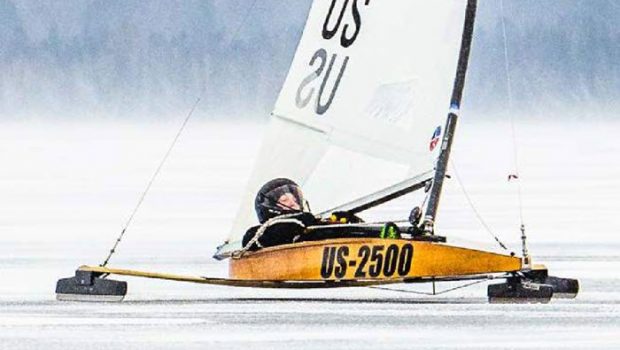


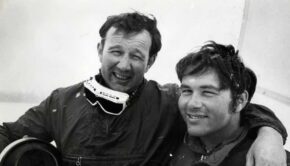
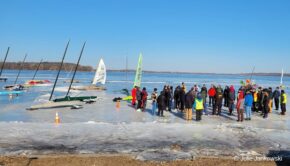
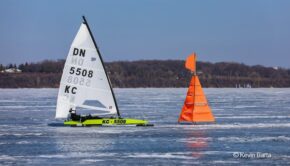
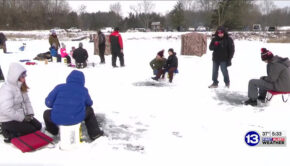
 We’ll keep your information safe.
We’ll keep your information safe.